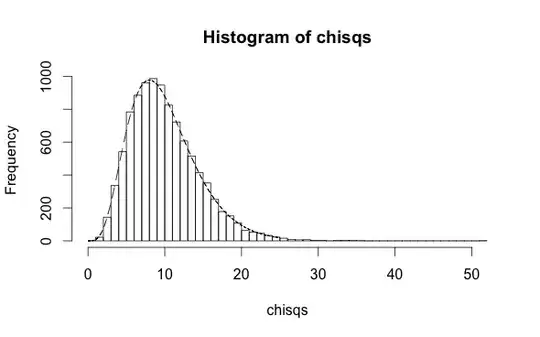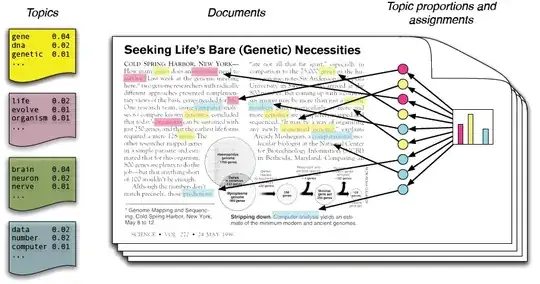Your question is quite broad and vague, but here is what you should consider: This depends entirely on how you are calculating the dependent score $Y$. If $Y(X)$ is a rule that you had even before you got your sample of financial scores, e.g. $Y = X^2$ or $Y = aX+b$ where you already know $a$ and $b$, then dividing based on the value of $Y$ is the same as dividing based on the value of $X$. It's the same information, just by a different name.
On the other hand, if you take your data sample and perform a statistical analysis to create a way of calculating $Y$, e.g. by performing a fit using your data and then using the predicted values from the fit, you could have problems. This is the situation described in @fcop's answer, where the specific case of logistic regression is considered, and perhaps this is the context in which you've been warned of possible danger.
Here are two small simulations contrasting the two scenarios, although its doubtful that they apply directly to your case. In the first, you have an independent variables $x$ and a dependent variable $y$ which is either true or false. Previous research has shown that the probability that $y$ is true is $\pi = 1/(1+\exp(-[0.1+0.5x]))$. Assuming this is exactly true, the following code simulates 10 thousand cross-checks where this prediction is applied to new data and checked against the known values $y$, at each step calculating the Hosmer-Lemeshow statistic. The result follows a chi-square distribution with 10 degrees of freedom -- one for each partition used in the test:
library(ResourceSelection)
n <- 500; chisqs <- c()
for (i in 1:10000) {
x <- rnorm(n)
p <- plogis(0.1+0.5*x)
y <- rbinom(n,1,p)
x2 <- hoslem.test(y,p)$statistic
chisqs <- cbind(chisqs,x2);
}
h <- hist(chisqs,50)
xs <- seq(0,25,0.01)
ys <- dchisq(xs,df=10)
lines(xs,ys*h$counts/h$density)

On the other hand, if you use the values of $y$ to make a fit and create the predictions, you'll clearly do better because you've peeked at the answers. In this case the degrees of freedom in the distribution of the HL statistic are 8:
library(ResourceSelection)
n <- 500; chisqs <- c()
for (i in 1:10000) {
x <- rnorm(n)
p <- plogis(0.1+0.5*x)
y <- rbinom(n,1,p)
fit <- glm(y~x)
x2 <- hoslem.test(y,fitted(fit))$statistic
chisqs <- cbind(chisqs,x2);
}
h <- hist(chisqs,50)
xs <- seq(0,25,0.01)
ys <- dchisq(xs,df=8)
lines(xs,ys*h$counts/h$density)

This illustrates one scenario in which something like the danger you've described occurs. You'll need to decide what category your case falls into.

